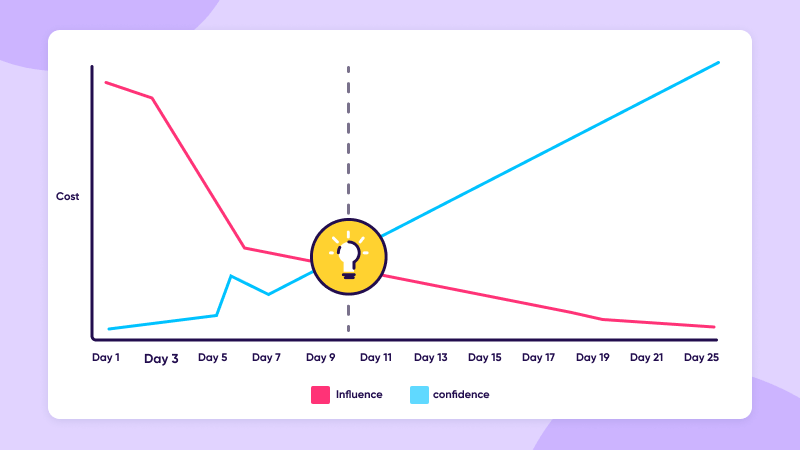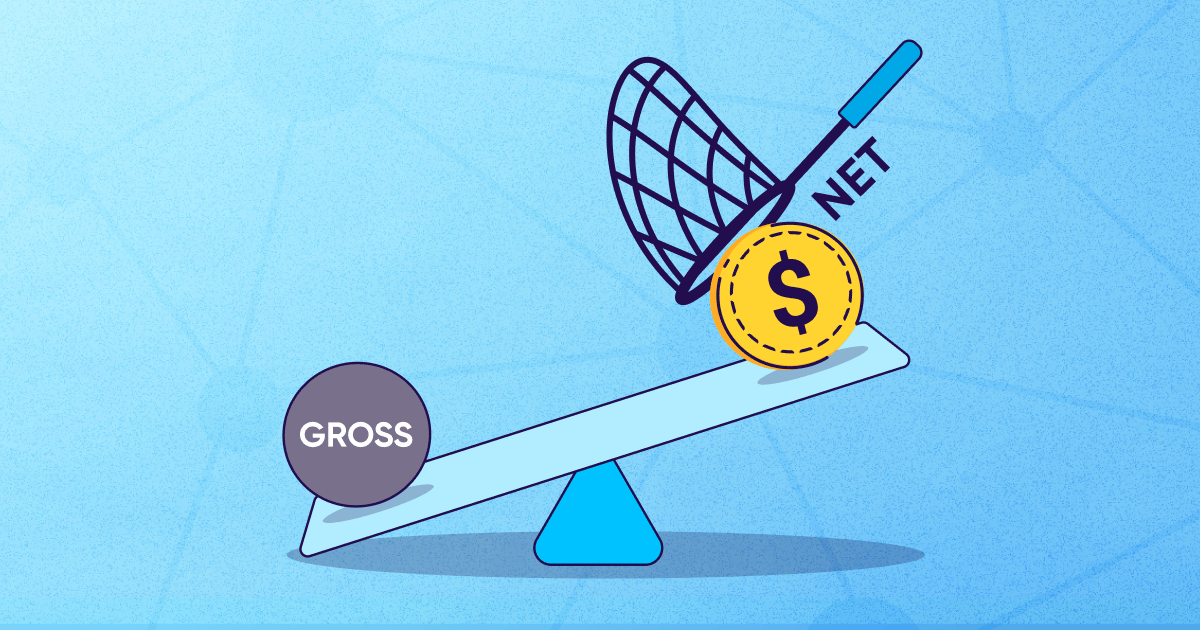
How predictive decision-making could save you up to $280k a month – data study

Wouldn’t it be great to have a crystal ball that could predict the success of your mobile marketing campaigns?
Making decisions would be a breeze — you’d know from the start which campaigns and channels would be most effective, and where to invest your budget to acquire the highest-value users. No more wasting money on campaigns that don’t bring results.
As a user acquisition manager, that means you’re spending your marketing budget on a campaign without knowing if you’re acquiring the right type of users. In the current financial downturn every dollar counts, and spending your budget on a campaign without understanding your return is a luxury you cannot afford.
But how much money can you actually save to maximize profitability? We took a deep dive into the data and found that the average gaming app can save up to $100,000 a month while in non-gaming that figure jumps to a staggering $280,000!
How did we reach those numbers, what is their significance, and what do we recommend is the best course of action for predictive insights? All the answers ahead.
The confidence vs. influence catch
When you’re evaluating your decision-making, you need to consider:
- The action you decided to take
- The influence that decision had
Both of these factors are largely affected by time.
To take the right action to optimize your campaign, you need to gather sufficient data to properly determine the campaign’s value, success, and ability to reach your goals.
And for your decision to have the right influence, you need to act as early as possible. That way you can avoid wasting your budget or, alternatively, capitalize on a good position.
Quite a catch, isn’t it?
On the one hand, the longer you wait, the more confident you can be in your decision (sufficient data can take anywhere between 7 and 30 days to be collected, depending on the company’s business intelligence capabilities). But on the other hand, you need to make your decision early to give it the most influence.

You’re constantly trying to find the equilibrium point between the two factors.
But what if we took the time element out of this equation?
What if we could push this equilibrium point to the earliest possible point in time? How would that affect the value of your campaign?
That’s exactly what we wanted to find out in the study below.
What’s the value of predictive insights for user acquisition?
Value can be interpreted in various ways, but this study focused on identifying the monetary effect of predictive insights, and more specifically the impact of being able to make optimization decisions earlier in a campaign’s lifetime than before.
How did we quantify predictive value?
There are different ways to assess the value of predictive insight, depending on what you’re trying to achieve. You may want to measure:
- Cost savings: budgets that can be saved by taking quick action and terminating a poorly-performing campaign
- Revenue boost: additional revenue that can be gained by identifying high-performing campaigns early and increasing their budget and/or bid
- Alternative cost: the potential impact of a dollar reallocated from a poorly-performing channel to a successful one
With additional revenue being very difficult to estimate, as it’s specific to each campaign and advertiser, we decided to focus our research on campaign cost savings — something we can all relate to.
For this study we examined the performance of 60 Android apps and 60 iOS apps, which were categorized as either “Gaming” or “Non-gaming”.
With our focus on cost savings, our research question was further narrowed down to the following:
How much can the average app save by making campaign termination decisions earlier?
To calculate the potential savings, we compared the effect of an advertiser making a decision on their usual day, versus making that decision on day 3 using predictive insights that were available 48 hours into the campaign.
Since different advertisers make campaign optimization decisions at different points in time, we introduced several hypothetical decision checkpoints:
- [Day 7 decision cost]-[Day 3 decision cost]
- [Day 14 decision cost]-[Day 3 decision cost]
- [Day 21 decision cost]-[Day 3 decision cost]
- [Day 26 decision cost]-[Day 3 decision cost]
What makes a successful campaign?
We needed to define success in order to determine which campaigns should be terminated, but the parameters can differ depending on the app category, its business model, and other factors.
We opted to compare campaign retention, as campaigns that deliver higher churn rates (in other words, low retention) can be clearly defined as poorly performing, especially when compared to similar campaigns run by the same advertiser.
With this in mind, we set the bottom 30% of campaigns for each advertiser in terms of retention as the least successful campaigns.
Turning early predictive insights into value
Clearly, getting data earlier in a campaign can help you make decisions faster. But we wanted to know, what’s the true value of those decisions? How much money could advertisers be saving?
As mentioned above, our study looked at both iOS and Android apps — here’s how the two platforms measure up.
Android apps: major savings in non-gaming
When analyzing the Android group of apps, we identified a significant gap between the potential savings for non-gaming apps and gaming apps.
While the average number of poorly-performing campaigns is similar across both categories, standing at 15.7 campaigns, the main reason for the gap is the difference in cost per install (CPI) rates between the two.
Android gaming apps are famous for promoting their campaigns with dramatically low CPI rates, due to factors including install attribution fraud, and a greater reliance on in-app event measurement.
Regardless of this, the day 7 decision group can still potentially enjoy massive monthly savings of over $19,000 for a gaming app, and over $40,000 for a non-gaming app.
As each advertiser’s common decision-making time grows, so does the value they can gain by adopting predictive logic and taking action earlier. So for the day-26 group, cost savings could reach over $100,000 monthly for the average gaming app and over $280,000 for the average non-gaming app.
iOS apps: fewer campaigns, but gaming saves more
When examining these effects across iOS apps, a slightly different picture emerges.
The most notable difference is the average number of poorly-performing campaigns per advertiser in iOS, which stands at just 2.9 campaigns. Since our research is based on analyzing the bottom 30% of campaigns, this low number isn’t a reflection of the high quality of iOS campaigns, but rather the actual number of iOS campaigns run by the average advertiser.
This is likely connected to Apple’s SKAdNetwork (SKAN), its data measurement limitations, and advertisers’ lack of confidence within this space, which has resulted in fewer iOS campaigns overall.
We also noted that predictive insights have a higher impact on gaming apps than non-gaming apps in iOS. Gaming CPI rates on iOS are not only dramatically higher than those on Android, but also higher than non-gaming CPI rates.
These differences are reflected in the average monthly savings per advertiser. Gaming advertisers on iOS showed potential savings varying between $20,000 and $69,000 compared with their usual decision-making day, while non-gaming advertisers could save between $7,900 and $40,000 monthly.
Conclusions and key takeaways
Early decision-making is worth its weight in gold
Launching new campaigns can be an expensive task if you don’t have the right business insights. You can easily burn through your marketing budget while you wait for sufficient data measurements to build up.
The ability to get performance insights as early as 48 hours into a campaign’s run-time translates into earlier decision-making and earlier actions, which in turn shift the return on investment (ROI) needle in the right direction.
Data limitations affect campaign scale
Apple’s SKAN has dramatically affected the way advertisers operate and manage their iOS budgets. You might be put off by the lack of clarity created by privacy limitations and restricted measurement windows — and you’re not alone.
While this is a large-scale effect of Apple’s privacy constraints, predictive data offers a solution by leveraging early measurement to get clarity over predicted future activity.
Value isn’t just about savings
While the numbers presented in this study are impressive for any advertiser operating in the mobile space, they’re far from representing the definitive value that can be gained from predictive analytics, as they only represent cost savings.
While predictive logic is already used by some of the largest companies in the world, its applications across UA are only just being explored.
In the hands of capable UA teams, these insights can not only result in significant savings, but can also help set the direction of worthwhile channels to invest in and create a better overall campaign management culture, where smarter budget decisions power growth.
Put insights into action
Keep in mind that early performance insights alone don’t guarantee better performance or savings: you need to put them into action to make a genuine impact.
Introducing predictive logic into any organization’s decision-making process ensures that future results are also taken into consideration when making decisions on the next actions to be taken.
So, there you have it: proof that taking action earlier to optimize your mobile campaigns can have real, tangible value. And the tools to make it happen are within your reach — no crystal ball required!




